

NMSU: Understanding Teens. Guide F-122 Diana S.
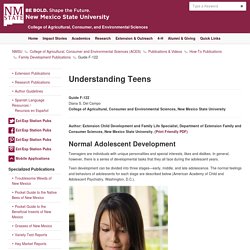
Del Campo College of Agricultural, Consumer and Environmental Sciences, New Mexico State University Author: Extension Child Development and Family Life Specialist, Department of Extension Family and Consumer Sciences, New Mexico State University. (Print Friendly PDF) Normal Adolescent Development. Understanding Teenagers. Understanding Your Teen's Emotional Health. Communicating your love for your child is the single most important thing you can do to help them during their teenage years.

Children decide how they feel about themselves in large part by how their parents react to them. For this reason, it’s important for parents to help their children feel good about themselves. You can do this by: Building their confidence and self-esteem. Further understanding of Teenagers. Positive reinforcement is the one parenting trick everybody needs to know.
At the start of the school year, Lonnie Starling was struggling with her eight-year-old son’s behaviour.
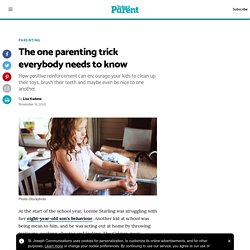
Another kid at school was being mean to him, and he was acting out at home by throwing tantrums, pushing, shoving and kicking. The Calgary mom remembered that using positive reinforcement—that is, focusing on the positive things he was doing, rather than constantly correcting his behaviour—had been effective to influence his actions when he was a toddler, so she got into the habit of praising him again. “When he does something good, we kind of go overboard. Positive Reinforcement. Using Positive Reinforcement. Positive vs. Negative Reinforcement: A Guide for Parents – Generation Mindful.
I almost stopped bringing them to the playground.
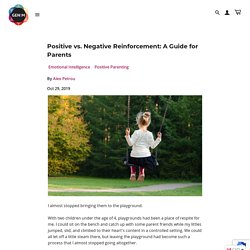
With two children under the age of 4, playgrounds had been a place of respite for me. I could sit on the bench and catch up with some parent friends while my littles jumped, slid, and climbed to their heart's content in a controlled setting. We could all let off a little steam there, but leaving the playground had become such a process that I almost stopped going altogether. Inevitably, when I announced it was time to go, my 3-year-old would run away. Guide for Parents for using reinforcement. What is Negative Reinforcement? Positive Punishment: What It Is, Benefits, and Examples. Positive punishment is a form of behavior modification.
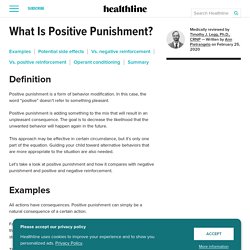
In this case, the word “positive” doesn’t refer to something pleasant. Positive punishment is adding something to the mix that will result in an unpleasant consequence. Using Positive Punishment for Teenagers. What is Positive Punishment? Positive Punishment Video. Negative Punishment Examples and Scenarios.
Nobody ever wants their stuff taken away.
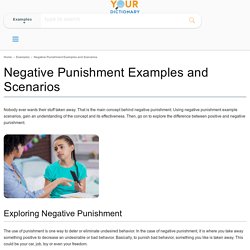
That is the main concept behind negative punishment. Using negative punishment example scenarios, gain an understanding of the concept and its effectiveness. Then, go on to explore the difference between positive and negative punishment. Exploring Negative Punishment. Negative Punishment for Teenagers. Negative Punishment Example. Negative Punishment Video.